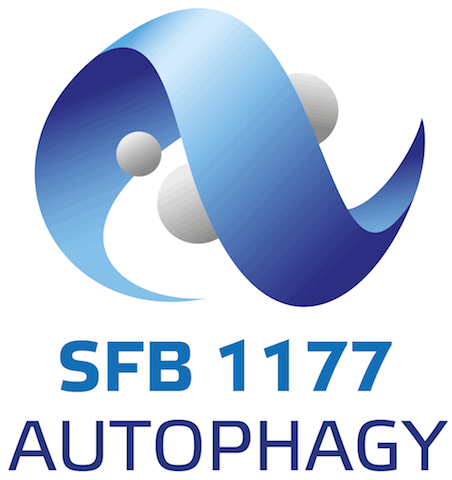F03
Regulation of aggrephagy by co-chaperones and assisting proteins
The co-chaperone BAG3 is involved in the autophagic clearance of aggregation-prone proteins (aggrephagy), such as the Alzheimer’s-associated protein tau. Aggrephagy dysfunctions play a deleterious role in the development of neurodegenerative diseases. This collaborative project aims to unveil the molecular and functional principles that regulate BAG3- and HDAC6-mediated aggrephagy in neurodegeneration.
The Kaulich Group will characterize ATG/Ub3 ligase-dependencies in BAG3-mediated aggrephagy by CRISPR genomics. More specifically, this part of the project will identify ubiquitin-system dependencies of BAG3-mediated autophagy and aggrephagy, characterize direct and redundancy-mediated ATG8 effects on BAG3-mediated aggrephagy, and map the BAG3-dependent functional autophagy and aggrephagy-landscape.
The Behl group will profile the aggresomal content under different paradigms such as BAG3 or HDAC6 deficiency to functionally characterize the target proteins. To characterize the precise BAG3 dependency of target proteins such as mutant tau or SOD in vitro as well as in vivo, this project part will profile autophagosomes from different neuronal cell models and from murine brain tissues for different disease-associated BAG3 variants. Together with the Kaulich group, we will dissect the mechanistic basis of BAG3-mediated aggrephagy in detail at the genomic and proteomic level.
The Heilemann group will develop fluorescence imaging methods for long acquisition times with high temporal resolution to follow the structural dynamics in BAG3-mediated aggrephagy in living cells across time scales. Two strategies will be followed: (i) the employment of renewable fluorophore labels that facilitate bleaching-independent fluorescence microscopy, and (ii) the integration of neural networks for content restoration in low-intensity microscopy.
Together, this project will clarify the role of aggrephagy in protein aggregation diseases and pin down targetable, decisive control factors of this selective autophagy process.

prof. dr. christian behl
Institute for Pathobiochemistry
University Medical Center of the Johannes Gutenberg University Mainz
Duesbergweg 6
655099 Mainz
Germany
Office: +49 6131 3925890
cbehl@uni-mainz.de

PROF. DR. MIKE HEILEMANN
Institute for Physical and Theoretical Chemistry
GU Frankfurt
Max-von-Laue-Str. 7
60438 Frankfurt a. M
Germany
Office: +49 69 798 29736
heilemann@chemie.uni-frankfurt.de

Prof. dr. manuel kaulich
Institute of Biochemistry II
GU Frankfurt
Theodor Stern Kai 7
60590 Frankfurt a. M.
Germany
Office: +49 69 6301 15450
kaulich@em.uni-frankfurt.de

